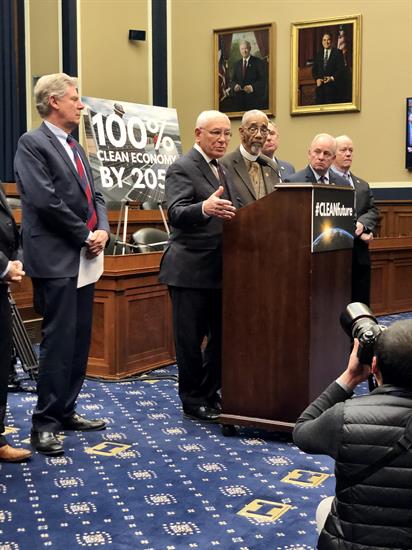- Home
- About
-
Constituent Services
- Academy Nominations
- Community Project Funding
- Congressional Art Competition
- Congressional App Challenge
- Congressional Commendation
- Event Invitation
- Grants
- Help with a Federal Agency
- Internships
- IRA Clean Energy Consumer Benefits
- Know Your Rights: Immigration
- Request a Meeting
- Request Surplus Books
- Presidential Greeting
- Visit Washington D.C.
- Issues & Legislation
- News
- 20th District
- Contact

Opinion Pieces
The long-lasting potential of the Inflation Reduction Act
Washington,
September 27, 2022
Before the enactment of the Inflation Reduction Act (IRA), the American Recovery and Reinvestment Act (ARRA) was considered our nation’s greatest legislative achievement to deploy clean energy. In the past decade, policymakers have learned much from the ARRA experience, and those lessons were incorporated into IRA, putting this new legislative accomplishment on a path to transform our economy and influence our national energy transition well-beyond the bill’s 10-year budget window. It is important to remember the context under which ARRA was developed. At that time, we faced the greatest economic recession since the Great Depression and historic levels of unemployment. ARRA was intended to get people back to work as quickly as possible with an emphasis on “shovel-ready” jobs. Clean energy technologies, like wind and solar energy, were provided greater tax incentive certainty. There is no doubt that these incentives created jobs and resulted in the significant deployment of renewables. Along with research investments by the Department of Energy, federal policy resulted in buying down the cost of these technologies, enabling them to outcompete fossil fuel projects in many parts of the country today. But while ARRA was primarily focused on short-term economic improvements, IRA takes a longer, more ambitious, and more holistic view. For starters, it considers the quality of jobs being created. For the past decade, prior to COVID-19, renewable energy jobs like solar installer and wind technician were among the fastest growing in the country. But many people raised concerns about the quality of these jobs, citing the fact that renewable energy jobs have been much less likely to be unionized than fossil energy jobs. IRA helps ensure that clean energy jobs are high-quality by incentivizing high-road labor standards. Wind, solar, geothermal, and energy storage projects that meet prevailing wage standards and utilize registered apprenticeship programs will be eligible for additional incentives. IRA includes billions of dollars in tax credits for a wide range of clean energy technology manufacturing, and the Department of Energy was provided billions more for grants through the Domestic Manufacturing Conversion Grant program and loans through the Advanced Technology Vehicles Manufacturing program to support the production of electric vehicles, batteries, critical mineral processing, charging equipment, and other clean transportation components. This mix of opportunities—grants, loans, and tax credits—helps ensure maximum flexibility, which will allow all different types and sizes of businesses to take advantage of the incentives. In addition to the bonus for high-road labor standards, IRA also establishes a bonus for domestic content, which will reinforce domestic manufacturing investments and create demand for U.S.-made clean energy technologies. Finally, IRA will complement last year’s Bipartisan Infrastructure Law. The efforts to repair and upgrade our nation’s infrastructure will take significant amounts of steel, cement, and other construction materials—the production of which results in significant climate pollutants. With that in mind, IRA provides energy-intensive manufacturers with billions of dollars in grant opportunities to decarbonize their facilities and improve their industrial processes. Not only will these new investments help achieve our climate goals, but they will also make U.S. energy-intensive manufacturers more globally competitive. IRA was structured to ensure that the industries needed to grow to achieve our near- and long-term climate targets will also support well-paying and long-lasting American jobs. This will guarantee that by the end of the 2020’s, not only will our energy system be transformed, but the United States will have a revitalized and more robust manufacturing base across several strategic sectors that currently are dependent on foreign competitors. Of course, this vision for our clean energy economy is not guaranteed. It will depend on the successful implementation of IRA in the years ahead. But if done right, there is no doubt that IRA will surpass ARRA not only in its scale in providing a near-term jobs boost, but also in its long-term economic impact that ensures the United States dominates the global clean energy economy of the future. |
